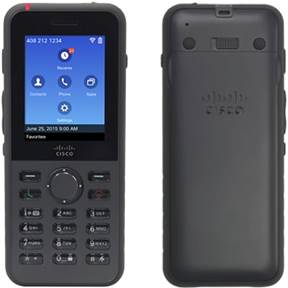Table 1 provides a list of the phone’s features, Table 2 summarizes the wireless characteristics, Table 3 lists specifications, and Table 4 provides certification and compliance information.
| Item |
Description |
| Features |
- Six line appearances
- Abbreviated dialing
- Adjustable ringing and volume levels
- Adjustable display brightness and timeout
- Audible and vibrating ringers
- Auto-answer
- Auto-detection of headset and auto-answer from headset
- Automatic keypad lock
- Callback
- Call forward
- Call history lists
- Call park
- Call pickup
- Call timer
- Call waiting
- Caller ID
- cBarge
- Corporate directory
- Conference
- Direct transfer
- Extension mobility service
- Fast-dial service
- Group call pickup
- Hold
- Hotkey for keypad lock, ring silent mode, and voicemail access
- Immediate divert
- Join
- Last-number redial – green key
- Malicious caller
- Message-waiting indicator
- Meet-me conference
- Multilevel precedence and preemption (MLPP)
- Music on hold
- Mute
- Network profiles (4)
- OPickUp
- Personal directory
- Predialing before sending
- Presence
- Privacy
- Quality report tool (QRT)
- Redial
- Ring tone per line appearance
- Service URL
- Shared line
- Time and date display
- Transfer
- Network hold
- Hospitality
- Support for mutual-authentication Transport Layer Security (TLS)
- Cisco Unified Communications Manager WLAN profiles
- +Dialing
- Application launch pad
- Busy lamp field (BLF)
- BLF pickup
- BLF speed dial
- Call forward notification
- Forced authorization and client matter codes
- Intercom
- Mobility
- Silent monitoring and recording
- Speed dial
- Voicemail
- Whisper coaching
- Ring setting – phone active (ring, ring once, beep, flash)
- Predictive search on new call
|
| Buttons |
- Power button
- Volume up/down
- Two soft-key buttons to access screen-based applications, features, and functions
- Green key (answer/send/redial) and red key (power/end call)
- Application button
- Mute
- Speakerphone
- Five-way navigation support
- Numeric keypad (0–9, *, &, #)
|
| Codecs |
- G.711a, G.711u
- G.729a, G.729ab
- G.722
- Internet Low Bitrate Codec (iLBC) audio-compression codecs
- iSAC
|
| LEDs |
- Ring, message waiting, Wi-Fi status, and charging LEDs
|
| Protocol |
- Session Initiation Protocol (SIP)
|
| Call control |
- Cisco Unified Communications Manager: 9.1(2), 10.5(2), 11.0(1), and later
- Cisco Unified Survivable Remote Site Telephony (SRST): 10.x, 11.x, and later
- Cisco Unified Communications Manager Express: 10.x, 11.x, and later
- Cisco Hosted Collaboration Solution (HCS): 9.x, 10.x, 11.x, and later
|
| Security features |
- Certificates
- Image authentication
- Device authentication
- File authentication
- Signaling authentication
- Secure Cisco Unified SRST
- Media encryption using Secure Real-Time Protocol (SRTP)
- Signaling encryption using TLS Protocol
- Certificate authority proxy function (CAPF)
- Simple Certificate Enrollment Protocol support (SCEP) for certificate renewal
- Secure profiles
- Encrypted configuration files
- Cryptography is not enabled by default and may be enabled only through a cryptographically enabled Cisco Unified Communications Manager
|
| Provisioning and management |
- Configuration via Cisco Unified Communications Manager, SRST, and Unified Communications Manager Express administration interfaces
- Bulk provisioning support via desktop charger and USB to Ethernet dongle combination
- Web server for configuration and statistics
- Capability to disable local phone settings
- QoS reporting: Jitter, delay, dropped packets, and latency on a per-call basis
- Real Time Control Protocol (RTCP) support and monitoring
- Syslog
|
| Configuration options |
- Dynamic Host Configuration Protocol (DHCP) client or static configuration
- Support for online firmware upgrades using Trivial File Transfer Protocol (TFTP)
- Domain Name System (DNS)
|
| Application framework |
- XML (support push-to-talk, paging, and other applications)
|
| User localization |
Arabic, Bulgarian, Catalan, Chinese (Hong Kong), Chinese (China), Chinese (Taiwan), Croatian, Czech, Danish, Dutch, English (United Kingdom), English (United States), Estonian, Finnish, French (Canada), French (France), German, Greek, Hebrew, Hungarian, Italian, Japanese, Korean, Latvian, Lithuanian, Norwegian, Polish, Portuguese (Brazil), Portuguese (Portugal), Romanian, Russian, Serbian, Slovak, Slovenian, Spanish (Spain), Spanish (Colombia), Swedish, Thai, and Turkish
|
| Network localization |
Argentina, Australia, Austria, Belgium, Brazil, Canada, China, Colombia, Cyprus, Czech Republic, Denmark, Egypt, Finland, France, Germany, Ghana, Greece, Hong Kong, Hungary, Iceland, India, Indonesia, Ireland, Israel, Italy, Japan, Jordan, Kenya, Korea Republic, Lebanon, Luxembourg, Malaysia, Mexico, Nepal, Netherlands, New Zealand, Nigeria, Norway, Pakistan, Panama, Peru, Philippines, Poland, Portugal, Russian Federation, Saudi Arabia, Singapore, Slovakia, Slovenia, South Africa, Spain, Sweden, Switzerland, Taiwan, Thailand, Turkey, United Kingdom, United States, Venezuela, and Zimbabwe
|
| Item |
Specifications |
| Protocols |
- IEEE 802.11a, 802.11b, 802.11g, 802.11n, 802.11ac
|
| Frequency bands and operating channels |
- 2.412 to 2.472 GHz (channels 1 to 13)
- 5.180 to 5.240 GHz (channels 36 to 48)
- 5.260 to 5.320 GHz (channels 52 to 64)
- 5.500 to 5.700 GHz (channels 100 to 140)
- 5.745 to 5.825 GHz (channels 149 to 165)
- IEEE 802.11d is used to identify available channels
|
| Nonoverlapping channels |
- 2.4 GHz (20-MHz channels): up to 3 channels
- 5 GHz (20-MHz channels): up to 24 channels
- 5 GHz (40-MHz channels): up to 9 channels
- 5 GHz (80-MHz channels): up to 4 channels
|
| Operating modes |
- Auto (preference to 5 GHz)
- 2.4 GHz only
- 5 GHzonly
|
| Data rates |
- 802.11a: 6, 9, 12, 18, 24, 36, 48, and 54 Mbps
- 802.11b: 1, 2, 5.5, and 11 Mbps
- 802.11g: 6, 9, 12, 18, 24, 36, 48, and 54 Mbps
- 802.11n: HT MCS 0, MCS 1, MCS 2, MCS 3, MCS 4, MCS 5, MCS 6, and MCS 7
- 802.11ac: VHT MCS 0, MCS 1, MCS 2, MCS 3, MCS 4, MCS 5, MCS 6, MCS 7, MCS 8, and MCS 9 (MCS 9 available with VHT40 and VHT80 only)
|
| 2.4-GHz receiver sensitivity |
IEEE 802.11b:
- 1 Mbps: -98 dBm
- 2 Mbps: -96 dBm
- 5.5 Mbps: -93 dBm
- 11 Mbps: -91 dBm
|
IEEE 802.11g:
- 6 Mbps: -95 dBm
- 9 Mbps: -94 dBm
- 12 Mbps: -93 dBm
- 18 Mbps: -90 dBm
- 24 Mbps: -87 dBm
- 36 Mbps: -84 dBm
- 48 Mbps: -79 dBm
- 54 Mbps: -77 dBm
|
IEEE 802.11n HT20:
- MCS 0: -95 dBm
- MCS 1: -92 dBm
- MCS 2: -90 dBm
- MCS 3: -87 dBm
- MCS 4: -83 dBm
- MCS 5: -78 dBm
- MCS 6: -77 dBm
- MCS 7: -75 dBm
|
| 5-GHz receiver sensitivity |
IEEE 802.11a:
- 6 Mbps: -94 dBm
- 9 Mbps: -93 dBm
- 12 Mbps: -92 dBm
- 18 Mbps: -89 dBm
- 24 Mbps: -86 dBm
- 36 Mbps: -83 dBm
- 48 Mbps: -78 dBm
- 54 Mbps: -76 dBm
|
IEEE 802.11n HT20:
- MCS 0: -94 dBm
- MCS 1: -91 dBm
- MCS 2: -89 dBm
- MCS 3: -86 dBm
- MCS 4: -82 dBm
- MCS 5: -77 dBm
- MCS 6: -76 dBm
- MCS 7: -74 dBm
|
IEEE 802.11n HT40:
- MCS 0: -91 dBm
- MCS 1: -88 dBm
- MCS 2: -86 dBm
- MCS 3: -83 dBm
- MCS 4: -79 dBm
- MCS 5: -75 dBm
- MCS 6: -73 dBm
- MCS 7: -72 dBm
|
IEEE 802.11ac VHT20:
- MCS 0: -93 dBm
- MCS 1: -90 dBm
- MCS 2: -87 dBm
- MCS 3: -84 dBm
- MCS 4: -81 dBm
- MCS 5: -76 dBm
- MCS 6: -75 dBm
- MCS 7: -74 dBm
- MCS 8: -70 dBm
|
IEEE 802.11ac VHT40:
- MCS 0: -90 dBm
- MCS 1: -87 dBm
- MCS 2: -85 dBm
- MCS 3: -82 dBm
- MCS 4: -79 dBm
- MCS 5: -73 dBm
- MCS 6: -72 dBm
- MCS 7: -72 dBm
- MCS 8: -67 dBm
- MCS 9: -66 dBm
|
IEEE 802.11ac VHT80:
- MCS 0: -87 dBm
- MCS 1: -83 dBm
- MCS 2: -81 dBm
- MCS 3: -78 dBm
- MCS 4: -75 dBm
- MCS 5: -73 dBm
- MCS 6: -68 dBm
- MCS 7: -68 dBm
- MCS 8: -64 dBm
- MCS 9: -62 dBm
|
| Transmitter output power |
2.4 GHz:
- 802.11b: up to 17 dBm
- 802.11g: up to 14 dBm
- 802.11n HT20: up to 13 dBm
|
5 GHz:
- 802.11a: up to 14 dBm
- 802.11n HT20: up to 13 dBm
- 802.11n HT40: up to 13 dBm
- 802.11ac VHT20: up to 12 dBm
- 802.11ac VHT40: up to 12 dBm
- 802.11ac VHT80: up to 12 dBm
|
| Antenna |
- 2.4 GHz: 2.4 dBi peak gain
- 5 GHz: 3.0 dBi peak gain
|
| Access point support |
- Cisco unified access points
◦ Minimum: 7.0.250.0
◦ Recommended: 7.4.121.0, 7.6.130.0, 8.0.100.0
- Cisco autonomous access points
◦ Minimum: 12.4(21a)JY
◦ Recommended: 12.4(25d)JA2, 15.2(4)JB6, 15.3(3)JAB
- Cisco Meraki® access points
|
| Wireless security |
Authentication:
- Wi-Fi Protected Access (WPA) versions 1 and 2 Personal and Enterprise
- Extensible Authentication Protocol – Flexible Authentication via Secure Tunneling (EAP-FAST)
- Protected Extensible Authentication Protocol – Microsoft Challenge Handshake Authentication Protocol Version 2 (PEAP-MSCHAPv2)
- Extensible Authentication Protocol – Transport Layer Security (EAP-TLS)
|
Encryption:
- 40-bit and 128-bit static Wired Equivalent Privacy (WEP)
- Temporal Key Integrity Protocol (TKIP-Broadcast/ Multicast) and Message Integrity Check (MIC)
- Advanced Encryption Standard (AES)
|
| Fast, secure roaming |
- 802.11r (FT)
- Cisco Centralized Key Management
|
| Signature types |
- Secure Hash Algorithm 1 (SHA-1) and Secure Hash Algorithm 2 (SHA-2)
|
| Bit key types |
- 1024, 4028, and 4096 bit keys
|
| QoS |
- IEEE 802.11e and Wi-Fi Multimedia (WMM)
- Traffic Specification (TSPEC)
- Traffic Classification (TCLAS)
- Enhanced Distributed Channel Access (EDCA)
- QoS Basic Service Set (QBSS)
|
| Item |
Specifications |
| Display |
- 2.4-in. (6-cm) color display with 240 x 320 pixel resolution
|
| Dimensions (HxWxD) |
- 5.2 x 2.2 x 0.7 in. (13.2 x 5.6 x 1.7 cm)
|
| Weight |
- Device 4.4 oz (126 g), battery 1.3 oz (37 g), total = 5.7 oz (163 g)
|
| Battery |
- Up to 13 hours of voice calling; up to 220 hours standby
- Rechargeable Lithium ion 4.35V, 2060mAh smart battery Note: Actual battery life varies significantly based on environmental factors, scan mode, and Bluetooth use.
|
| Input power |
- Phone: 100 to 240 VAC, ~0.2A, and 50 to 60 Hz
- AC adapters (by geographical region)
|
| Operating temperature |
- Device: 14° to 122°F (-10° to 50°C)
- Battery: -4° to 140°F (-20° to 60°C)
|
| Storage temperature |
- Device: -22° to 140°F (-30° to 60°C)
- Battery: -4° to 113°F (-20° to 45°C)
|
| Relative humidity |
- 10% to 95% (noncondensing)
|
| Vibration |
- 1.5 Grms maximum, 0.1 in. (2.5 mm) double amplitude at 0.887 octaves per minute from 5-500-5 Hz sweep, and 10-minute dwell on three major peaks in each of the three major mutually perpendicular axes
|
| Thermal shock |
- -22°F (-30°C) 24 hours; 158°F (70°C) 24 hours
|
| Altitude |
- Certified for operation: 0 to 6500 ft (0 to 2 km)
|
| Endurance |
- Ingress Protection Standard IP67
- MIL-STD-810G Drop and Vibration procedures
|
| Drop specs |
- Withstand multiple drops of 6 feet (1.8 m) onto concrete. 12 drops (6 faces, 4 edges, face, and bottom)
|
| Headset |
- Wireless: Bluetooth SW 3.0 HW 4.0
- Wired: 3.5 mm stereo headphone/microphone jack
|
| Connector |
- Magnetic USB 2.0 On the Go (OTG) connector
|



